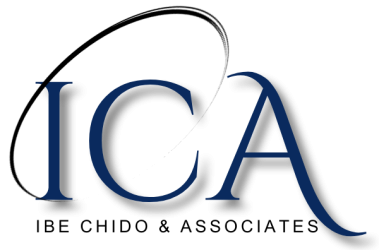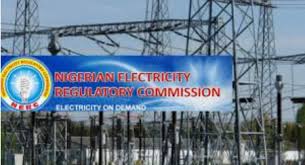Nigeria’s electricity sector is undergoing rapid transformation to meet growing demand. As of June 2025, transmission losses in the national grid stood at approximately 16.5%, underscoring the critical need for additional Transmission Service Providers (TSPs) to bolster infrastructure and reliability. Securing a Transmission Service Provider License from the Nigerian Electricity Regulatory Commission (NERC) empowers companies to build, upgrade, and operate transmission networks at voltages of 132 kV and above. This guide breaks down every requirement, step, cost, and timeline—directly sourced from NERC—to help you navigate the licensing process smoothly and position your organisation as a key player in Nigeria’s power sector.
1. Understanding the Transmission Service Provider License
A Transmission Service Provider License authorises an entity to:
-
Develop and maintain high-voltage transmission infrastructure (≥132 kV).
-
Operate transmission lines and substations.
-
Enter transmission use-of-system agreements with Distribution and Trading Licensees.
This license falls under Section 65(1) of the Electric Power Sector Reform Act 2005 and is one of five principal licenses issued by NERC to regulate the Nigerian Electricity Supply Industry (NESI).
2. Why You Need the License
-
Legal Compliance: Operating transmission assets without a valid NERC license is prohibited and subject to penalties.
-
Revenue Generation: Authorised TSPs recover costs via Transmission Use-of-System (TUoS) charges and earn returns on invested capital.
-
Grid Stability: With multiple TSPs, the national grid becomes more resilient, reducing outage risks.
-
Investment Attraction: A NERC license signals regulatory approval, boosting investor confidence.
3. Regulatory Framework
-
Electric Power Sector Reform Act 2005: Empowers NERC to issue licenses (Sections 64–68).
-
NERC Application for Licenses Regulations 2010 (NERC-R-0110A): Details application, renewal, amendment, and extension procedures.
-
Requirements for License, Permits & Authorisations (2017): Sets out fees, validity periods, and annual operating charges.
Together, these instruments form the bedrock of Nigeria’s licensing regime for generation, transmission, system operations, distribution, and trading.
4. Eligibility Criteria
Before applying, ensure your organisation:
-
Is incorporated under the Companies and Allied Matters Act (CAC).
-
Has a minimum ten-year business plan for transmission operations.
-
Possesses access to engineering, technical, and financial resources.
-
Can demonstrate off-take arrangements (e.g., Memoranda of Understanding with EPC contractors, offtake agreements with buyers).
-
Meets all environmental and safety standards, including an Environmental Impact Assessment (EIA) where applicable.
5. Requirements (Schedule 1C)
Every application must include the following documents and information:
| No. | Requirement |
|---|---|
| 1 | Duly completed NERC application form |
| 2 | Certificate of Incorporation & Memorandum & Articles of Association |
| 3 | Evidence of site control (Title Deed, Sale Agreement, Deed of Assignment) |
| 4 | Tax Clearance Certificates (last 3 years) |
| 5 | Ten-Year Business Plan |
| 6 | Off-take Agreement or Arrangement |
| 7 | MoU/Letter of Intent from EPC Contractor (if applicable) |
| 8 | MoU/Letter of Intent from Technical Partner (if applicable) |
| 9 | Financing Agreements/Commitment Letter from Financial Institution(s) |
| 10 | Network Agreements with Distribution or Trading Licensees |
| 11 | Single-line Diagram of Transmission Network (132 kV & above) |
| 12 | Single-line Diagram showing Points of Connection to Major Loads/Power Stations |
| 13 | Details (Name, Number, Capacity) of Substations |
| 14 | Details (Length, Number of Circuits) of Transmission Lines |
| 15 | Details (Type, Capacity) of Interconnecting Transformers |
| 16 | Details of Reactive Compensation Equipment |
| 17 | Substation Layouts (bus arrangement, circuitry, earthing, interlocks) |
| 18 | Transmission Line Parameters (voltages, reactance, resistance, susceptance, thermal rating) |
| 19 | Transformer Parameters (MVA, vector group, reactance, tap-changer data, cooling) |
| 20 | Equipment Details (circuit breakers, CTs, PTs, lightning arresters) |
| 21 | Protection & Metering Schemes (relay settings, coordination, metering details) |
| 22 | Right-of-Way & Trace Clearance for Lines |
| 23 | Communication & SCADA Facility Details |
| 24 | Total System Peak Load |
| 25 | Maximum Network Capacity (MW, MVAr) |
| 26 | Health & Safety Policy |
| 27 | Environmental Impact Assessment (EIA) for new lines (if required) |
6. Step-by-Step Application Process
-
Download Application Form
-
Obtain from NERC’s website or office: [Application for License Regulations, 2010].
-
-
Prepare Documentation
-
Compile all requirements listed in Section 5.
-
Organise into three (3) paper copies + 1 electronic copy (CD-ROM).
-
-
Pay Processing Fee
-
₦1,000,000 non-refundable (see Section 7 for fees breakdown).
-
-
Submit Application
-
Addressed to the Chairman, NERC, hand-delivered or courier to NERC Headquarters.
-
-
Acknowledge & Completeness Check
-
NERC records receipt date & sends acknowledgement within 30 days.
-
If information is incomplete, NERC will request additional data (application lapses after 60 days if unaddressed).
-
-
Statutory Public Notice
-
Upon completeness confirmation, publish notice in two newspapers (one national, one local) within 30 days of acknowledgement.
-
-
Objection Period & Hearing
-
21 days for public objections post-publication.
-
NERC may hold a hearing (concluded within 30 days of notice) to consider objections.
-
-
Decision
-
NERC to approve/refuse within 6 months of acknowledgement.
-
On approval, license conditions & fees are communicated in writing.
-
-
License Issuance
-
Pay prescribed license fee (U.S. $300,000 or Naira equivalent).
-
Receive the Transmission Service Provider License, valid for 10 years.
-
7. Fees & Costs
A. One-Time Fees
| Fee Type | Amount |
|---|---|
| Processing Fee (Application & Amendment) | ₦1,000,000 |
| License Fee | US $300,000 (or ₦ equivalent) |
| Processing Fee (Extension of Tenure) | ₦500,000 |
B. Recurring Charges
-
Annual Operating Fee: 1.5% of Licensee’s charges (₦/kWh) net of generation and transmission costs.
| Validity | Years |
|---|---|
| License Term | 10 |
8. Timeline Overview
| Milestone | Timeframe |
|---|---|
| Application Submission | Day 0 |
| Acknowledgement by NERC | Less than 30 days |
| Completeness Check & Notice | Less than 60 days (including public notice) |
| Objection Period | 21 days post-publication |
| Hearing (if any) | Concluded within 30 days of notice |
| Final Decision by NERC | Less than 6 months from acknowledgement |
| License Issued & Validity | Upon fee payment; valid for 10 years |
9. Common Misconceptions
-
“I can start transmission works before licensing.”
False. Construction or operation without a valid NERC license attracts fines and injunctions. -
“Only Transmission Company of Nigeria (TCN) can hold a TSP license.”
False. While TCN holds the bulk of transmission assets, private entities can obtain TSP licenses for new lines or privatised assets. -
“Foreign firms cannot apply.”
False. Non-Nigerian companies may apply, provided they are duly registered with CAC and meet all statutory requirements. -
“Annual operating fees are fixed.”
False. Fees are variable at 1.5% of actual charges/kWh net of generation and transmission costs. -
“Environmental Impact Assessment (EIA) is optional.”
False. EIAs are mandatory for new transmission lines and substations to ensure environmental compliance.
10. Frequently Asked Questions
Q1: What is the difference between a Transmission License and a Transmission Service Provider License?
A: They are synonymous under NERC’s regulatory framework. Both refer to the authorisation to build, own, and operate transmission assets—voltages ≥132 kV—within NESI.
Q2: Can I apply for multiple licenses simultaneously (e.g., Generation + Transmission)?
A: Yes. Applications must be submitted separately for each license type, with corresponding forms and fees.
Q3: How long is the Transmission Service Provider License valid?
A: 10 years from the date of issuance, renewable upon compliance with renewal requirements (application at least 9 months before expiry).
Q4: What happens if objections are filed during public notice?
A: NERC convenes a hearing where objectors and the applicant present arguments. The Commission then makes a final decision considering all representations.
Q5: Is it possible to amend or transfer my TSP license?
A: Yes. Amendments follow the same process as initial applications (Chapter III). Transfers or changes in shareholding attract a ₦1,000,000 administrative fee under Section 69 of the Act.
11. Conclusion
Securing an Electricity Transmission Service Provider License in Nigeria is a rigorous but rewarding process. By adhering strictly to NERC’s 2010 Regulations and the 2017 Fees Schedule, and by submitting a comprehensive application dossier, your organisation can become a licensed TSP—poised to play a vital role in strengthening Nigeria’s power grid. Use this guide as your blueprint, ensure every requirement (Schedule 1C) is meticulously met, and stay informed on regulatory updates.
Position your company at the forefront of Nigeria’s electrification drive!


